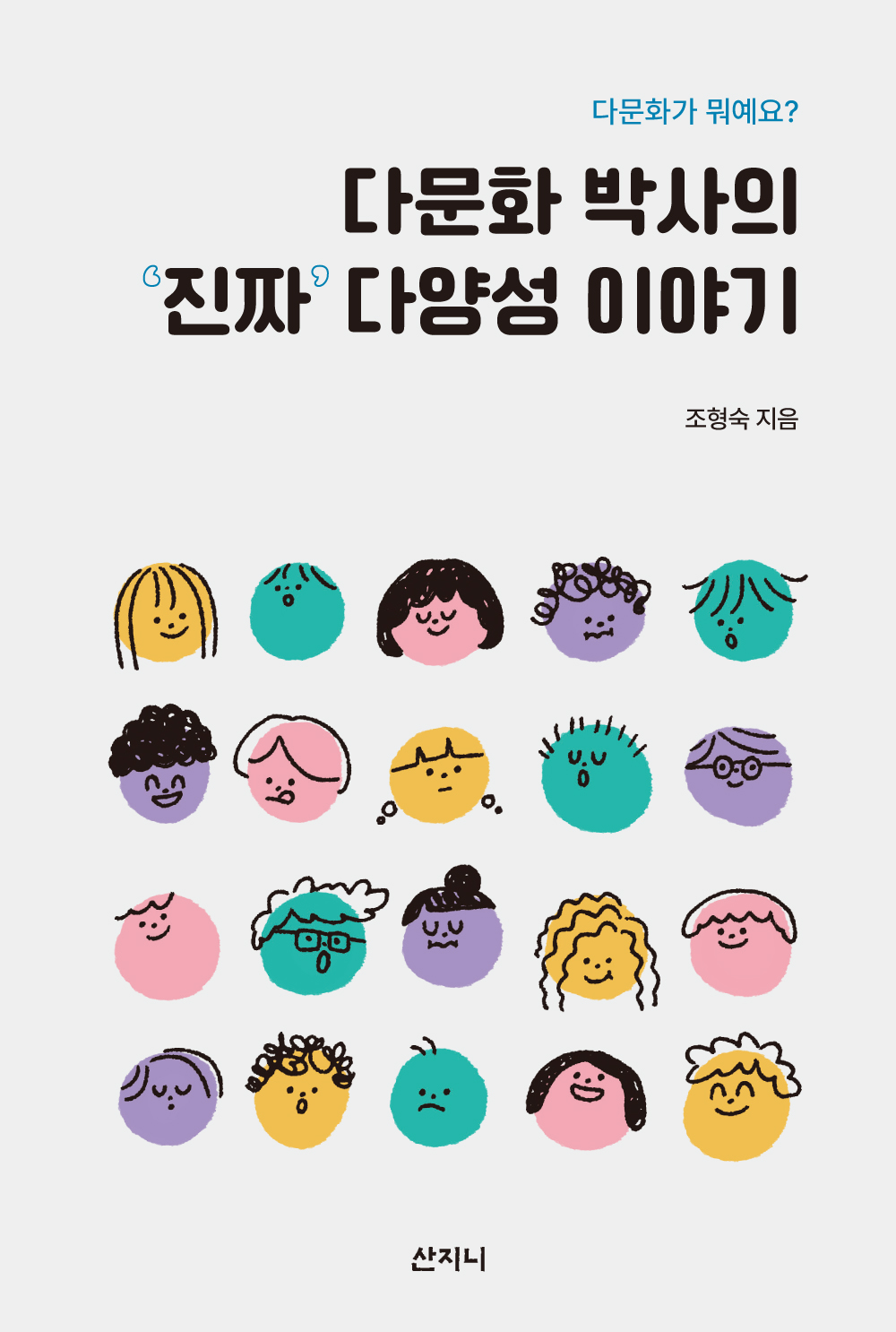
A Story of Real Diversity
Cho Hyong-sook
| Pages | 224 |
|---|---|
| Dimensions | 148*220 |
| ISBN | 979-11-6861-004-0 03330 |
| Price | 16,000 WON |
| Date | 2022-02-15 |
| Contents | Education |
Overview
This book delivers author Hyong-sook Cho's knowledge and experience of multiculturalism and bilingualism based on her experience of learning and educating others about the topic.
A Story of Real Diversity discusses author Hyong-sook Cho's knowledge and experience of multiculturalism and bilingualism based on her experience of learning and educating others about multiculturalism. This book discusses multiculturalism and diversity in different contexts and presents how to embrace cultural diversity as the world trends towards a multicultural society.
2.3 million farmers. 2.5 million immigrants. South Korea is rapidly becoming a multicultural society. South Korean schools continue to incorporate multiculturalism in the curriculum, and multicultural families are readily found around us. All of this highlights the importance proper education on multiculturalism.
Immigrant students with a multicultural background identify themselves with their mother countries while living in South Korea. However, second generation immigrants do not identify themselves as immigrants, separating themselves from first generation immigrants. Therefore, school curriculums that highlight assimilation are not readily accepted. The author argues that turning these immigrants into Korean people is incorrect.
Part 3 deals with racial diversity based on the author's experience. Cho argues that among caucasians, there are subcategories to determine superiority, while the colored races are lumped only into Asians or African Americans. The author learned of various racial concepts that were not reasily experienced in South Korea where racial differences are relatively less prominent. She shares the problems associated with racism from conversations with Norma Jeane, the local clinic she visited with her son, and classrooms with international students with diverse backgrounds.
Some children with multicultural backgrounds speak both of their parents' languages or a single language from one of their parents. In a TV program <Return of the Superman> Juho Park's children speak Korean, Engish, and German, depending on the situation, demonstrating the example of how multicultural children use language.
As the author observed and helped her son and niece learn English in the United States, she discovered that children groups formed based on gender and the languages they spoke. She noticed the same social behavior in multicultural schools. By demonstrating how multicultural children learned and used language, the author presents how to approach language educations as South Korea moves towards a multicultural society.
About author
Born in Milyang, South Korea in 1969
Earned B.A. in English education from Pusan National University in 1995
Earned M.Ed in TESOL at University of Georgia in 2004
Earned a Ph.D. in ESOL/Bilingual Education from University of Florida in 2015
Dissertation: Race, Language, and Identities of Biracial Children in Multicultural Schools in South Korea
Cho became a professor at Seowon University (formerly Cheongju Education University) is 2017. Prior to that, she was a researcher at the Institute for International Education and a univeristy admissions officer. Prior to that she taught at a highschool for a decade. Cho has served as a member of multicultural Education Promotion Commission at Chungcheongbuk-do Office of Education and Busan's Multicultural Family Committee.
